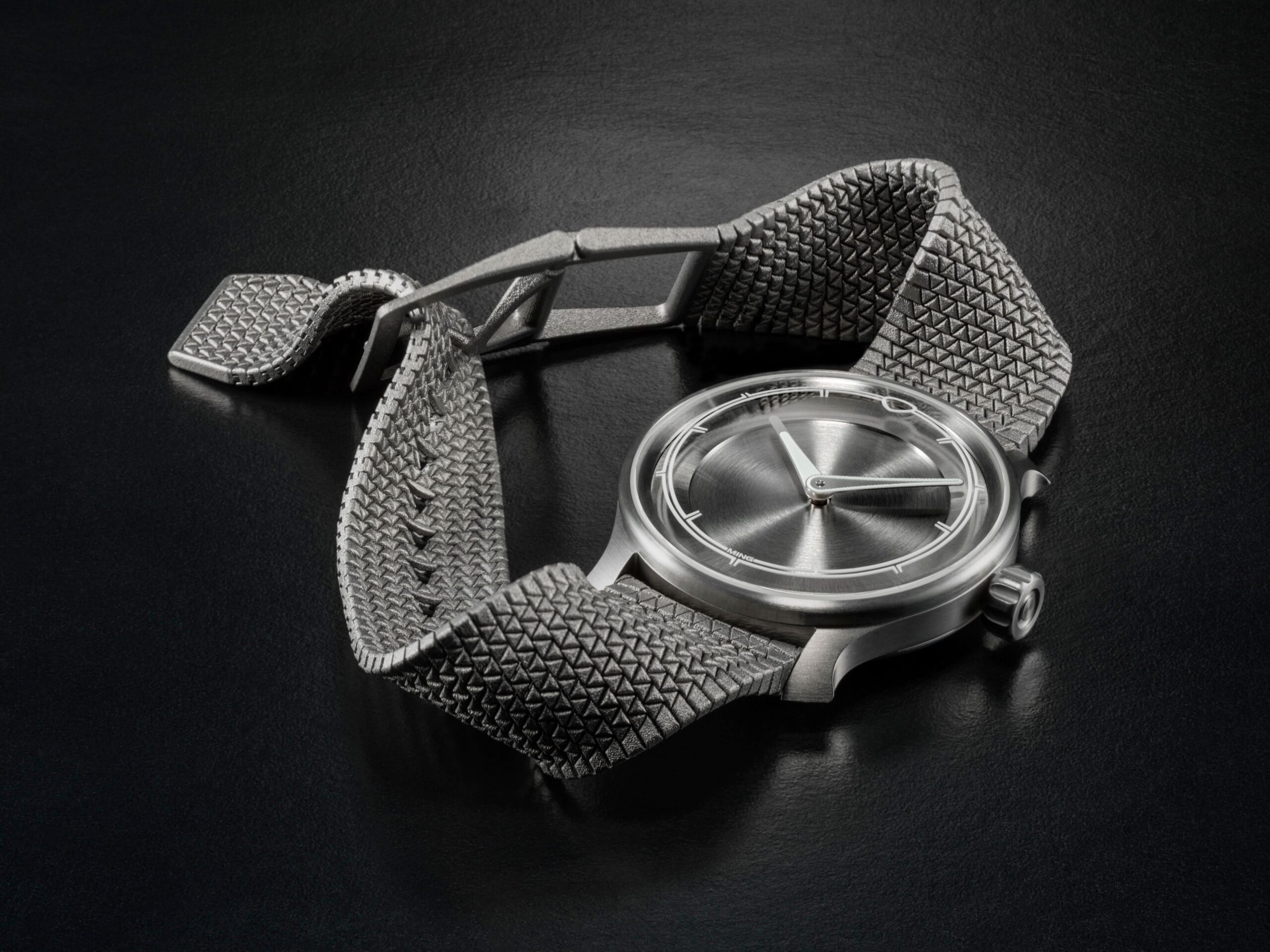Want a watch strap that’s as comfortable as fabric, as light as rubber, as strong as a metal bracelet, and as tactile as a Milanese mesh?
Any watch fan looking to tick all of the above boxes would normally expect to be a dab hand with a spring bar removal tool to experience all the above individually, but a new strap developed by Malaysian independent brand Ming appears to now offer the best of all worlds.

Photograph: Courtesy of Ming
The one strap to rule them all has been dubbed the Polymesh. It is 3D-printed from grade 5 titanium and comprises 1,693 interconnected pieces (including the buckle), held together without any pins or screws. The only additional parts requiring assembly are the quick-release spring bars at each end that attach it to the watch—the articulated pin buckle is also formed in the same process.
Ming says the strap, made up of rows of 15 equilateral triangles meshed together and bookended by larger end pieces, “has more motion engineered into the radial axis than the lateral one,” leading to a supple end result that drapes like fabric yet retains the strength of titanium.
It has taken the company seven years to develop, working with partners Sisma SpA in Italy and ProMotion SA in Switzerland. Ming says notable challenges included the risk of components fusing together, and the fact that powdered titanium—the raw material from which the strap is laser sintered—is highly explosive. Each strap take several hours to produce, requiring hundreds of layers of additive manufacturing in an inert gas environment.
The company is not the first to use 3D-printing techniques for final products in watchmaking (as opposed to prototyping), but it is the only one using it for straps or bracelets. British start-up Apiar has debuted a 3D-printed watch case, as has Dutch brand Holthinrichs, which has created versions of its Ornament 1 in both 18-karat gold as well as stainless steel.
The Case for Straps
To the extent that straps have been an area for innovation in the watch world, recent attention has tended to focus on brands’ development of proprietary mechanisms for swappable straps, to varying degrees of success and popularity. Sustainability programs have focused on leather alternatives such as reclaimed apple peel or mushroom-based material, or textiles woven from ocean plastic. Some have proven difficult to industrialize, and nearly all have been dogged by accusations of greenwashing.

Rolex’s 2015 Oysterflex strap featured an elastomer virtually indistinguishable from rubber with thin blades of titanium-nickel alloy embedded within it for strength.
Photograph: Stojan & Voumard/ Rolex
The last time a brand released anything that could realistically be described as an innovative hybrid would probably be Rolex’s 2015 introduction of the Oysterflex strap: an elastomer virtually indistinguishable from rubber with thin blades of titanium-nickel alloy embedded within it. But the aesthetic result bears no comparison to Ming’s Polymesh; to achieve a slinky, supple feel with a metal bracelet usually requires brands to invest heavily in handcraft—like that of Patek Philippe’s recent Golden Ellipse, which the brand says is crafted by master chainsmiths from 363 components—and the end result will naturally be limited to much more traditional constraints.
Over the years, other companies have sought to improve on traditional straps for various reasons. Some artisanal watches feature curved spring bars (as in fact does the Polymesh), or insist on solid gold (like Berneron); Omega once prototyped a strap woven from synthetic spider silk, which has finally made it to production as the Biosteel nato.

Omega has produced a nato strap woven from a synthetic spider silk called Biosteel.
Photograph: Courtesy of Omega
California startup Barrelhand whose Monolith is being developed for space exploration uses a strap built by Nick Mankey Designs that it says is “UV resistant, water proof, freeze proof, overstretch resistant, extremely lightweight and machine washable” from polyester elastic webbing with grade 5 titanium hardware. Operating since 2018, Mankey last year created the Chronogrip, after two years of development and 90 design iterations. Essentially a unique take on nato straps with two different security measures for strap retention, as Mankey’s version doesn’t need to pass under the base of the watch case, his design is also good for smartwatches.
Still, there’s nothing quite like Ming’s revolutionary new take on things. The brand, which says it is also working on a version in stainless steel and will soon offer a 22-millimeter lug width to go with the existing 20-mm specification, will be showing off the genuinely innovative Polymesh at WatchTime New York laster this month, and at Dubai Watch Week in November.
Of course, such groundbreaking work from a luxury watch brand to fashion a titanium bracelet that wears like a fabric strap yet feels like metal inevitably does not come cheap. Compatible with any Ming timepiece, the Polymesh is being sold separately—no, you don’t get a watch with this thing. It can be preordered now for 1,500 Swiss francs (approximately $1,900) and will take six to eight weeks to reach purchasers.




